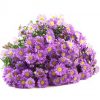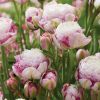Anise Hyssop, or Agastache foeniculum, is a fragrant perennial herb native to North America. With green leaves and long spikes of purple, lavender, or blue flowers, it’s prized for both ornamental and medicinal purposes. Learn the benefits and uses of this unique plant to your advantage.
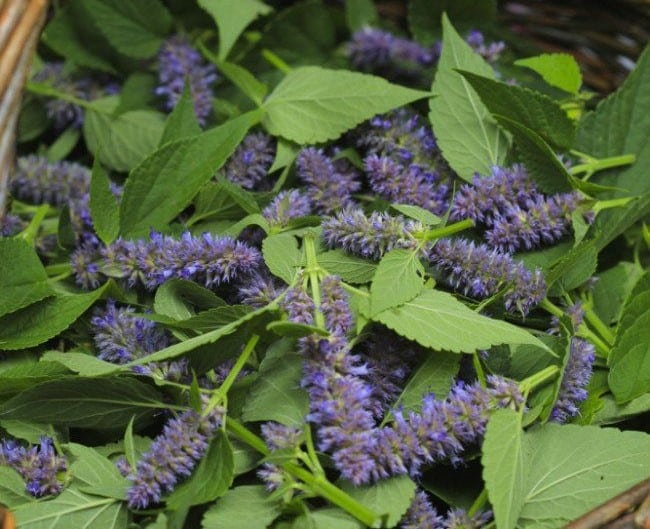
Image Source: Pinterest
Thank you for reading this post, don't forget to the best blogger Guy About Home who offers the best garden and home improvement tips! If you are a home decor and design fan, don't miss the tips on home ideas. If you are a home garden owner, then you might be interest in our complete guides to house plants!
Anise Hyssop is a native plant to most north-central and northern North Americans. Traditionally used by Native Americans to treat respiratory ailments, the plant has both antibacterial and anti-inflammatory properties. The fragrant giant hyssop is popular in teas, salads, and desserts, lending a sweet, licorice-like flavor.
The herb infusion is good for chest pain, and the roots are used to treat cough. Being popular with bees pollination also makes the plant a great addition to gardens, giving a perfect look to your yard.
You can learn more about how this plant contributes beautifully to your landscape. However, the information provided here will explore all the benefits and uses of this extraordinary plant specie.
What Does the Flower of Anise Hyssop Looks Like?
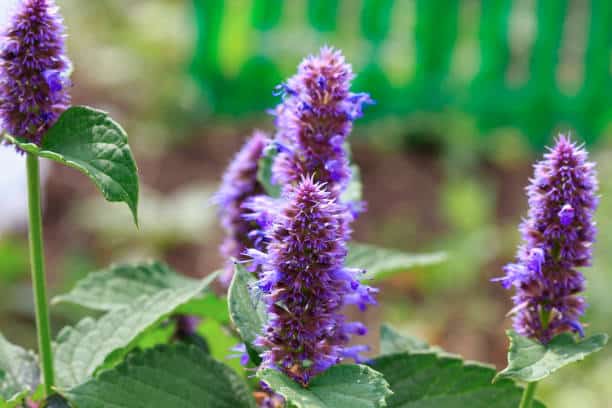
Image Source: iStock
Anise Hyssop Flower is the flowering portion of the Anise Hyssop plant (Agastache foeniculum). This perennial herb belongs to the mint family. The flowers are long spikes of small, tubular blooms in shades of purple, lavender, or blue, which appear in the summer months.
The flower’s aromatic fragrance is similar to that of anise or licorice. Apart from its ornamental value, the flower and leaves of the Anise Hyssop plant have medicinal and culinary uses. Native Americans traditionally used it to treat respiratory ailments, while in the kitchen, it’s used to add a sweet, licorice-like flavor to dishes.
Anise Hyssop Flower Features
The anise hyssop plant stands out from other species in the mint family, going by its features and characteristics. Its flowers are breathtaking. At a glance, check its features below.
- Appearance: Anise Hyssop Flower is a long spike of small, tubular blooms in shades of purple, lavender, or blue.
- Fragrance: The flower has a sweet and aromatic fragrance similar to anise or licorice.
- Bloom time: The flower blooms in the summer, from June to September, and can last several weeks.
- Pollinator-friendly: The flower is a favorite among bees and other pollinators, making it a great addition to any garden or landscape.
- Culinary uses: The flower and leaves of the Anise Hyssop plant can be used fresh or dried in teas, salads, and desserts, adding a sweet, licorice-like flavor to dishes.
- Medicinal benefits: Native Americans traditionally used the flower and leaves of the Anise Hyssop plant for their various therapeutic benefits, including treating respiratory ailments, coughs, and fevers. The plant is also known to have antibacterial and anti-inflammatory properties.
Varieties of Anise Hyssop Flower
There are several varieties of white asters, also known as the Asteraceae or daisy family. Here are some of the most popular white aster varieties:
- ‘Blue Fortune’
- ‘Black Adder’
- ‘Golden Jubilee’
- ‘Pink Pop’
- ‘Purple Haze’
- ‘Summer Love’
- ‘Alabaster’
#1 ‘Blue Fortune’
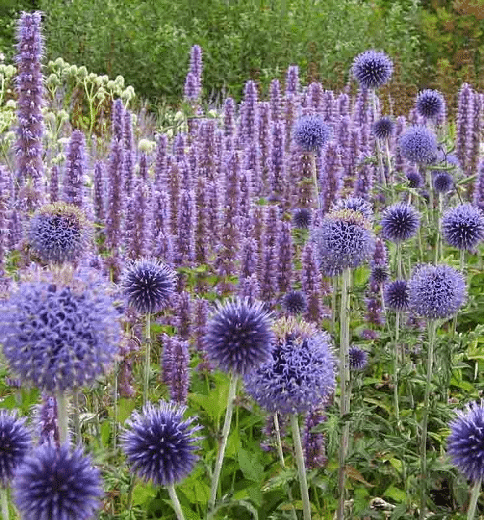
Image Source: Pinterest
This variety has large, deep blue flowers that are arranged in dense spikes on tall stems.
#2 ‘Black Adder’
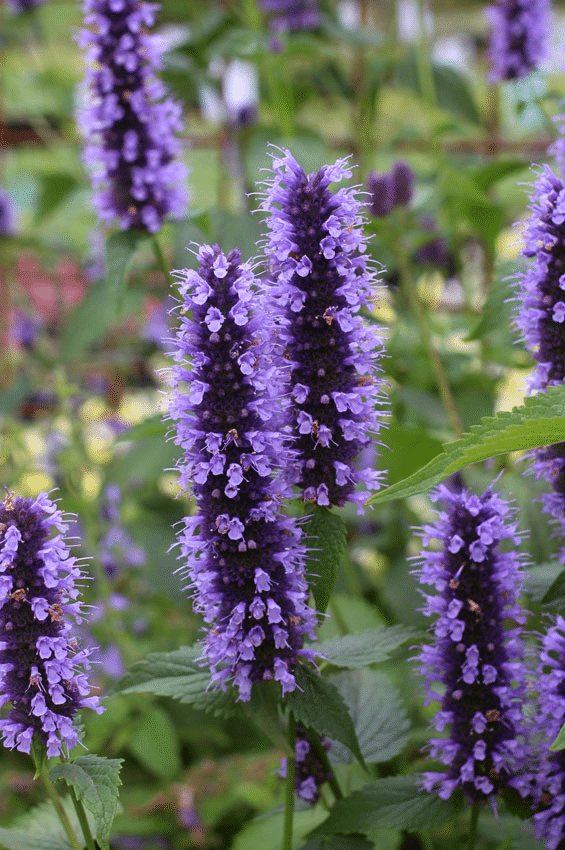
Image Source: Pinterest
This variety has smaller, darker purple flowers that bloom on shorter stems.
#3 ‘Golden Jubilee’
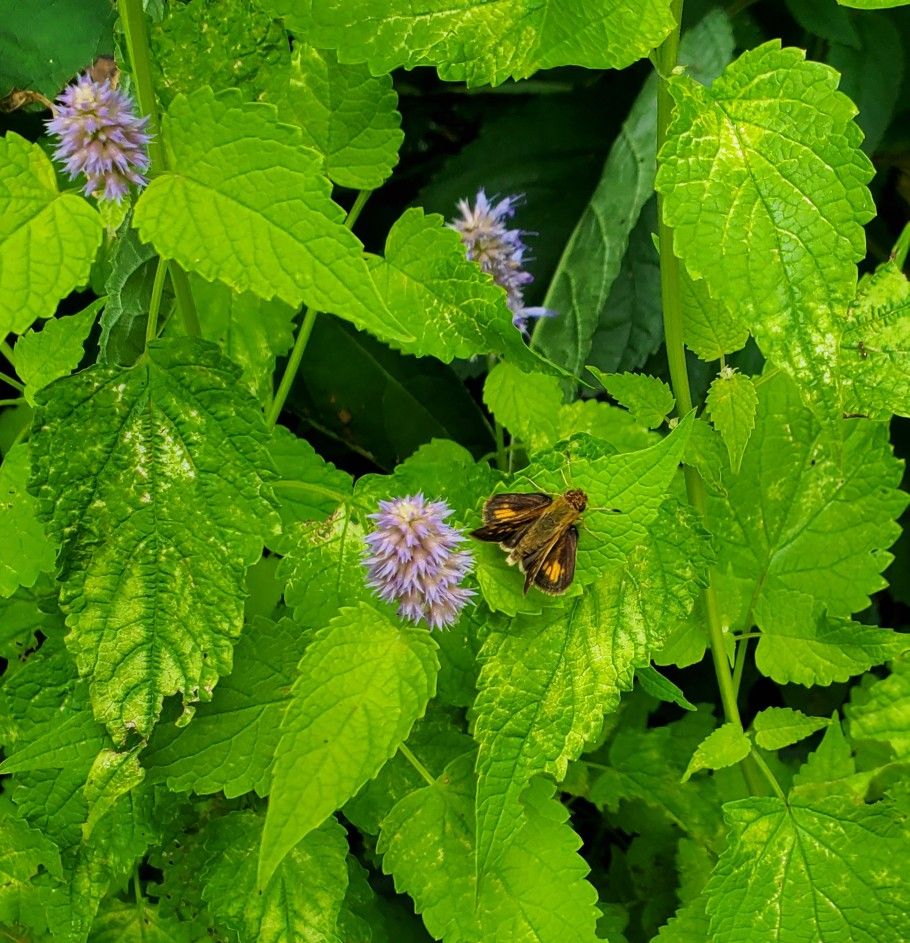
Image Source: Pinterest
This variety has golden-yellow foliage and pink-purple flowers.
#4 ‘Pink Pop’
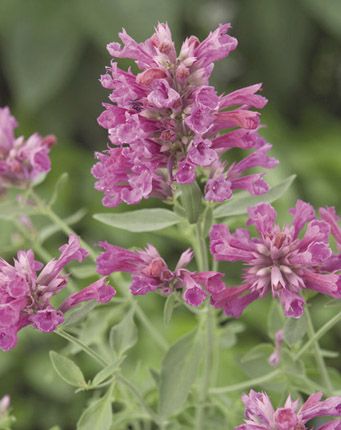
Image Source: Pinterest
This variety has bright pink flowers that bloom on compact plants.
#5 ‘Purple Haze’
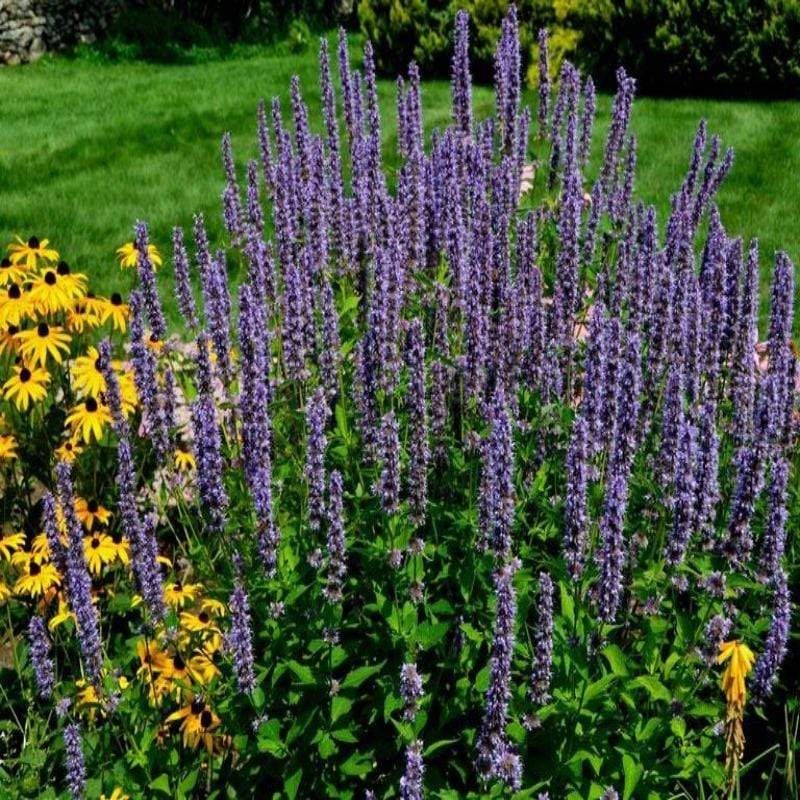
Image Source: Pinterest
This variety has long, purple flowers that are arranged in loose spikes on tall stems.
#6 ‘Summer Love’
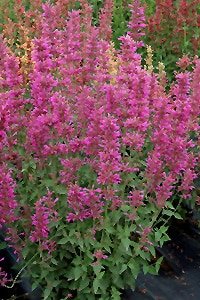
Image Source: Meadows Farms
This variety has soft pink flowers that bloom in late summer.
#7 ‘Alabaster’
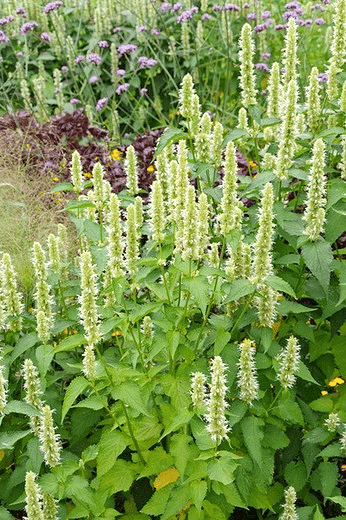
Image Source: Pinterest
This variety has white flowers that bloom on compact plants with green foliage
Where Do Anise Hyssop Flowers Grow
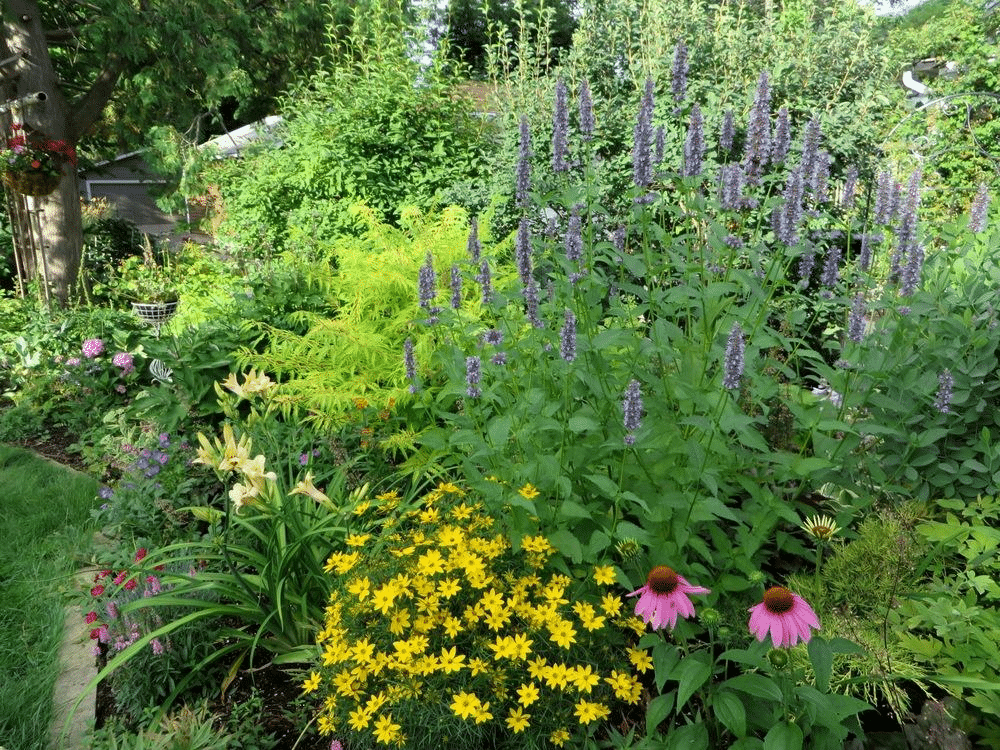
Image Source: Pinterest
Anise hyssop flowers are native to North America and can be found growing in various regions, including the eastern and central United States and parts of Canada. Like several house plants, anise hyssop prefers to grow in well-drained soils rich in organic matter and full to partial sun.
Anise hyssop can be grown in gardens, borders, meadows, and prairies, and they also make a great addition to butterfly and pollinator gardens. Additionally, anise hyssop can be grown in containers and used as a patio plant.
How Long Do Anise Hyssop Flowers Last
The bloom time for Anise Hyssop flowers typically lasts from mid-summer to early fall, which is approximately 2-3 months. The individual flowers may last up to several weeks, but the entire flowering period will depend on various factors such as temperature, soil conditions, and sunlight. With proper care and maintenance, Anise Hyssop plants can continue to produce flowers for several years.
Besides this plant, we also make a full care guide on how to care for Anthurium Clarinervium.
What Do Anise Hyssop Flowers Mean?
Anise hyssop flowers have different meanings depending on the cultural context. In some Native American cultures, the plant is considered a sacred herb in various rituals and ceremonies. In the language of flowers, anise hyssop is said to symbolize long life, happiness, and healing.
The plant is also associated with protection, purification, and spiritual awareness. The anise hyssop flower is appreciated for its beauty, fragrance, and versatility in medicinal and culinary applications.
What Are the Uses of Anise Hyssop Plant?
Historically, anise hyssop has several uses and benefits. The Early Americans harnessed its medical power and discovered its function as a fever reducer, cough suppressant, sore throat ameliorator, etc.
Interestingly, its leaves and flowers are implicated in benefiting humans greatly. And when used appropriately, the result is excellent. Its by-products, such as anise essential oil, are equally valuable and beneficial.
Uses of Anise Hyssop Leaves
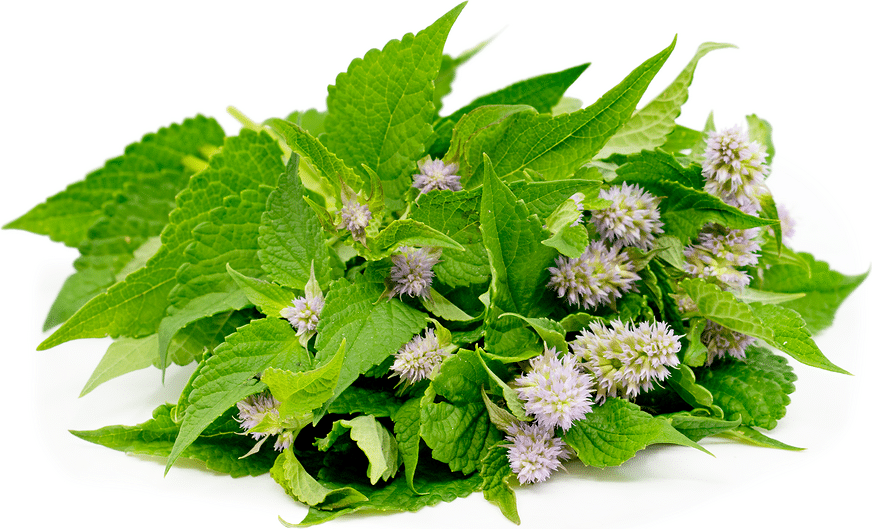
Image Source: Specialty Produce
Anise hyssop leaves serve various medicinal purposes, and our kitchen recipe isn’t complete without this fantastic plant.
- Its leaves are used as seasoning for cooking. When dried, they are used in tea, made into jellies, or served fresh in a salad.
- Due to their scented smell, even when dried, anise hyssop is also used in potpourri.
- Anise seeds are also added to muffins or cookies.
- Anise leaves taste excellent when consumed with chicken, salmon, and lamb.
Uses of Anise Hyssop Flowers
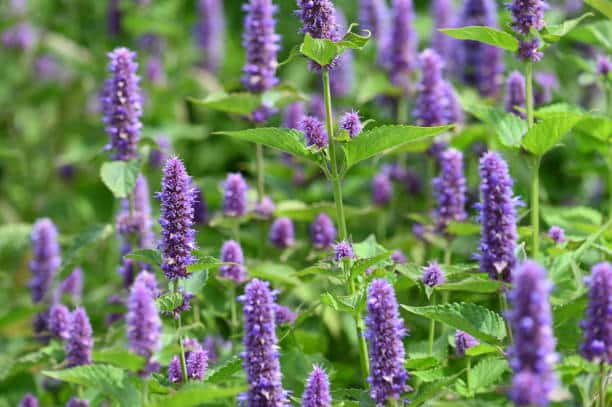
Image Source: iStock
Anise hyssop flowers have a milder flavor than the leaves. They look gorgeous and are edibles in salads.
- They are added to salads or baked foods such as hyssop whoopee pies, butter cookies, etc.
- They are also added to desserts and chocolates due to their licorice-like flavor.
What Are the Health Benefits of Anise Hyssop Plant?
The anise hyssop plant has served several health benefits since its discovery. Some of its numerous benefits are;
- The infused tea made from the herb is especially effective in relieving chest pain caused by excessive coughing.
- Mixed with licorice, anise hyssop helps treat respiratory diseases.
- A hot infusion tea of anise hyssop induces sweating, reducing fevers, colds, and diarrhea.
- Due to this quality, the Cheyenne were reported to use hyssop in sweat lodges.
- Based on clinical research, anise essential oil is known to be antiviral against Herpes simplex I and II.
- Used as a poultice, the plant helps treat burns and is prepared into a salve to treat wounds, sunburns, and athlete’s foot (fungal condition).
- Anise leaves are cardiac, suitable for the heart’s health, and can strengthen the core.
Are There Side Effects in Consuming Anise Hyssop Plants?
Thus far, there aren’t any side effects in consuming anise hyssop leaves or flowers. However, if you’re pregnant or breastfeeding, stay off anise hyssop. It is also advisable to speak to your doctor before consuming the herb.
Conclusion
Anise Hyssop is a versatile and fragrant perennial herb native to North America with a long history. Having been cultivated for decades, its ornamental and medicinal purposes are mindblowing. If you’re considering adding it to your garden plant collections, Guy About Home is here to help. We specialize in growing, caring for, and maintaining house plants to beautify your yard.


